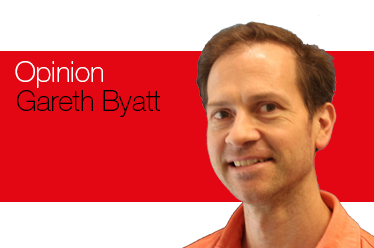Swiss Re Corporate Solutions’ Jonathan Rake explains why real innovation in insurance has never been more important
At the age of 42, Jonathan Rake - the Asia Pacific chief executive officer at Swiss Re Corporate Solutions - thinks he’s had “quite a good run”.
Modest to a fault, Rake has achieved an impressive career so far, taking on several leadership positions at Swiss Re - which he joined in October 2016 - and Zurich Insurance Group before that.
One of the stand-out moments came in 2008, when he stepped into the role of regional COO for Asia Pacific at Zurich Global Corporate, he explains.
“At the age of 27, I came out to Asia, having never been here before. I felt I’d be able to flourish with time but it was a huge step and challenge in so many different ways - I was massively tested.”
“One of the best pieces of advice I received early on from a mentor, former regional chairman for Asia Pacific & Middle East at Zurich Insurance Geoff Riddell, was to remember that people know when you’re not being authentic – and that’s something that’s stuck with me over the years. It’s about being more transparent and understanding, and these are things to continually strive towards.”
He has had to adapt his style of leadership during the pandemic, putting more emphasis on communicating clearly and empathetically.
“Technology was a lifeline during the worst of the pandemic. Video conferencing, virtual get-togethers and mental health networks helped to sustain connection in a new physical environment, which, by design, feels distant and sterile.”
Post pandemic risk landscape
The global pandemic has accelerated many of the trends around the ESG agenda, as governments and business seek to avoid climate-related future shocks and make the necessary transition to a zero carbon economy.
“The global nature of the pandemic has reminded everyone of the impact a global crisis can have. It has triggered many customers to re-look their own risk registers to evaluate whether there are other potential exposures where they may not be insured or are underinsured,” says Rake.
He believes the insurance industry has an opportunity and obligation to support wider trends around sustainability.
Whether this is providing insurance solutions for new renewable technologies such as battery storage that are still somewhat prototypical - and using predictive analytics in order to do that - or offering innovative natural catastrophe covers, there is a clear role for the industry.
“For renewable energy to gain more widespread adoption there are inherent risks in that transition that need to be addressed. Where we can come in from an insurance perspective is in de-risking projects and making them more viable,” he says.
“Take the risks around wind energy for instance. Too little wind means poor project cash flows resulting in concerned investors and leaders. Wind hedges can offer an innovative way around this dilemma.”
Time to innovate
The insurance industry also needs to innovate and create products and solutions that are useful in the context of a shifting risk landscape, thinks Rake.
With a more remote workforce and investment in digital solutions, the value that companies create and need to protect is increasingly intangible in nature.
“We see a continued shift from very tangible, hard assets to light asset companies. Today, the world’s biggest companies derive their economic value mostly from intangible assets, not from the production of physical assets.
With the transformation of the corporate sector, demand for insurance solutions is moving from asset covers to protection for business risks that were previously uninsurable like earnings and cash flow losses. Increasing availability of data, the evolution of analytical capabilities and innovative trigger solutions have made this possible.”
A future, more resilient world will only be achieved if insurers play their part in helping to reduce the underlying risk. ‘Building back better’ is today’s catchphrase.
A quote I like says, ‘We should be remembered not by what we create, but by what we leave behind’. As an industry, we need to remember that mitigating risk is about mitigating disasters or, more specifically, the impact of disasters,” says Rake.




















No comments yet